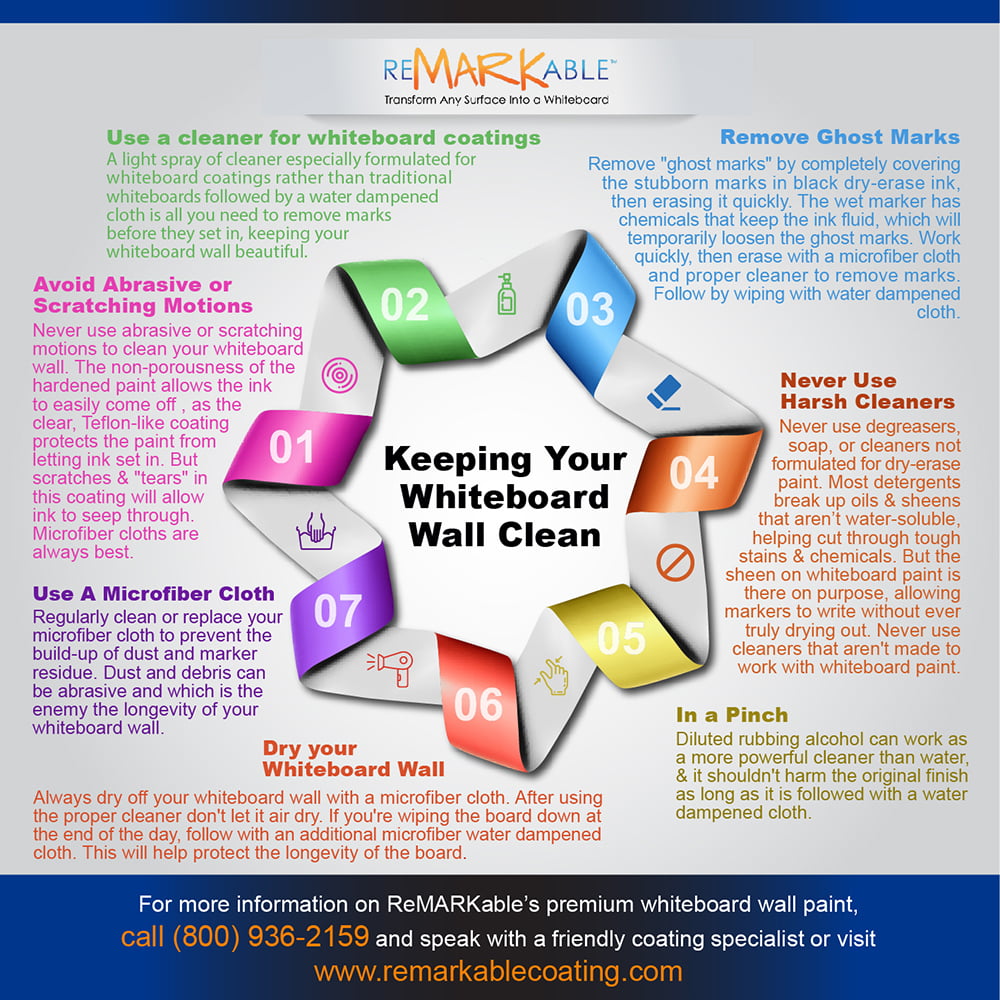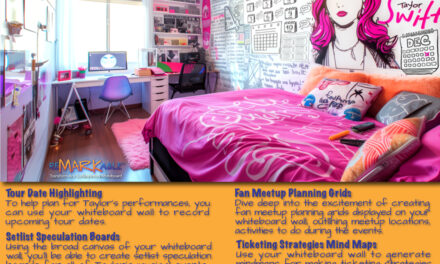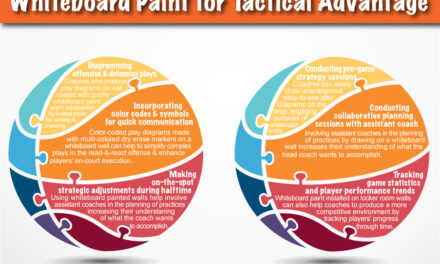Introduction:
Keeping a whiteboard wall clean while maintaining the sheen and erasability of your whiteboard coated surface is easy if you follow the cleaning guidelines presented below, which include detailed advice on:
(1) avoiding aggressive scrubbing actions and the use of harsh cleaners
(2) using a cleaner specifically made for whiteboard coatings
(3) ways to remove ghosting
(4) why never use harsh cleaners
(5) the use of diluted rubbing alcohol for cleaning if necessary
(6) the importance of drying your whiteboard painted surface after cleaning.
(7) why using a microfiber cloth can add the to the life of your whiteboard wall
Avoid Abrasive or Scratching Motions On Whiteboard Surfaces
Never use strong abrasive or scratching motions when cleaning your whiteboard-coated wall. The non-porous quality of a whiteboard painted surface allows ink to come off easily without the need for herculean rubbing, as the surface’s clear Teflon-like quality prevents ink from setting in. But any scratches and “tears” in the coating that may be produced through overly aggressive or abrasive rubbing will allow dry erase marker ink to seep through the surface. So, when cleaning your quality whiteboard coated wall it’s best to just use a gentle rubbing action with a clean microfiber cloth, towel, or mitt. On a related note, you should also avoid textured paper towels because they can produce scratches on your surface even when not used aggressively.
Use a cleaner for whiteboard coatings
A light spray of water-based eco-friendly whiteboard painted surface cleaner, such as our proprietary brand, and a clean microfiber cloth followed by a cloth moistened with water are all you need to remove dry erase marker ink from your surface before it has a chance to set in, keeping your wall beautiful, easy to write on, looking like new, and highly erasable for its entire lifetime of ten-plus years of use. Our cleaner is non-toxic, low odor, and environmentally friendly, making it completely safe to use in rooms such as offices, classrooms, clinics, and retail shops where people are busy working, studying, or doing other activities.
Remember to use only a water-based whiteboard surface cleaner and a clean microfiber cloth, towel, or mitt on your whiteboard wall. Water-based cleaners are always best since they will never compromise the sheen on your coated surface. Moreover, they’re safe for the environment as they contain virtually zero volatile organic compounds (VOCs), which contribute greatly to atmospheric pollution and are harmful to the health of humans and animals.
Remove Ghost Marks From Your Whiteboard Wall
Remove “ghost marks” by completely covering the stubborn marks with black dry erase ink then quickly erasing the inked-over area. Wet dry erase marker ink contains chemicals known as solvents that keep the ink in a fluid state so that it can temporarily loosen the ghost marks or permanent marker ink from your wall. Then work quickly and erase the area with a clean microfiber cloth and a water-based whiteboard painted surface cleaner to remove the permanent ink marks or ghosting. Follow this up by wiping the area off with a water-dampened microfiber cloth then with a dry cloth, and your surface should be as good as new.
Never Use Harsh Cleaners On A Whiteboard
Never use degreasers, detergents, general household cleaners, window cleaner, scouring powder, disinfectants, alcohol- or vinegar-based cleaners, or other harsh or abrasive cleaning products not formulated for cleaning whiteboard painted surfaces. Most detergents are able to break up oils and surface sheens that are not water-soluble, helping to cut through grease, tough stains, and chemical residue. But the glossy sheen on a whiteboard painted wall exists for a purpose — it allows you to write or draw on the wall using dry erase markers without the ink completely drying out so that the markings can be quickly erased. Thus, to protect your wall and preserve its beautiful sheen and easy erasability, never use cleaners that aren’t designed to work with whiteboard coated surfaces. Instead, stick with a water-based whiteboard surface cleaning product such as our proprietary brand, and you’ll never have any problems with the durability and erasability of your whiteboard-painted surface.
In a Pinch
If you’re in a pinch and have no water-based whiteboard surface cleaner available, diluted rubbing alcohol along with a clean microfiber cloth can work as a more powerful cleaner than water alone for your whiteboard painted wall and should not harm the finish. If you need to use alcohol for cleaning, follow it up by wiping the surface down with a water-moistened microfiber cloth, and then dry it with another microfiber cloth.
However, the general rule of thumb is to use our proprietary product, ReMARKable dry-erase cleaner, which can get rid of any stains and dark shadowy or ghosted areas on your whiteboard-coated surface. Just spray a small amount at a time onto the surface and go over all the areas that need cleaning by wiping them off with a microfiber cloth, towel, or mitt. Follow this up by wiping the areas again with water and a microfiber cloth, and finally dry the surface thoroughly with another cloth.
Dry Your Whiteboard Wall
After using a whiteboard surface cleaner or diluted rubbing alcohol to clean your whiteboard surface, it’s important to dry it off with a microfiber cloth, and not allow the wall to simply air dry. If you’re wiping the surface down at the end of the day, follow up by wiping it again with an additional water-dampened microfiber cloth and then dry off the water with a separate cloth. This will help to ensure the longevity and durability of your whiteboard coated surface and keep it looking new for ten-plus years of consistent use. Also, if your wall is not thoroughly dry and someone tries to write or draw on it, smearing of the dry erase marker ink can occur, causing streaking and a messy appearance. Such an incident could be especially awkward during a business meeting or conference where customers and/or VIP guests are present.
Use a Microfiber Cloth On your Whiteboard Wall
It’s highly recommended that you use only microfiber cloths, towels, or mitts to clean dry-erase ink markings from your whiteboard-coated surface. Also, you’ll need to regularly clean or replace your microfiber cloths to prevent the build-up of ink dust and marker residue on your surface. Dust and debris can be highly abrasive to the sheen of a whiteboard-coated wall and are thus the enemies of your wall’s erasability, appearance, and longevity. From an environmental standpoint, cleaning your microfiber cloths until they wear out is preferable to replacing them, so the following are some guidelines you can follow for washing your microfiber materials.
1. In the washing machine, launder your microfiber items in cold or warm water with a mild detergent. Although using no detergent would be ideal to better preserve the materials’ integrity, this is usually not practical. The water temperature in the machine should never be higher than around 1050 Fahrenheit.
2. Avoid the use of fabric softeners because they invariably clog up the tiny spaces in microfiber fabrics, making them unusable for cleaning or drying.
3. Be particular about what you wash along with your microfiber materials. Avoid mixing microfiber items with any items made of cotton because the microfiber fabrics will attract lint from the cotton items and thus lose their exceptional cleaning capacity.
4. It’s highly recommended that you keep microfiber fabrics separate from other items of laundry, but if you absolutely have to mix fabrics of different types, wash your microfiber things with other synthetic fabrics that produce no lint. As with any other items you wash, separate your white or light-colored microfiber materials from those of darker colors.
5. If you prefer to hand wash your microfiber cloths, use hot or warm water along with a mild detergent and a soft brush for removing stubborn ink and grime, and then rinse the items thoroughly. To guarantee the longest lifespan for your microfiber fabrics, air drying them is ideal. Microfiber fabric dries fairly quickly so air drying won’t be very time-consuming. If you plan to use an automatic dryer instead, set your machine on the lowest possible heat or no heat setting. Also, again dry your microfiber items apart from other laundry items so they don’t pick up additional lint from cotton or other fabrics.


























































































![ReMARKable’s Winter Sale is Here! [25% Off + Free Shipping]](https://www.remarkablecoating.com/wp-content/uploads/2018/01/Red-Tag-Winter-Fashion-Facebook-Post-1-440x264.png)















![Drive Your Organization Into Openness and Watch it Expand [20% Off Whiteboard Paint]](https://www.remarkablecoating.com/wp-content/uploads/2016/04/Drive-Your-Organization-Into-Openness-and-Watch-It-Expand.-1-440x264.jpg)

![30% Off St Patrick’s Day Sale! [Details Inside]](https://www.remarkablecoating.com/wp-content/uploads/2016/03/Glorious-1-440x264.png)


![Giant Leaps Forward Require Big Spaces. [Leap Year Sale Event!]](https://www.remarkablecoating.com/wp-content/uploads/2016/02/Giant-Leaps-ForwardRequire-Big-Spaces-440x264.jpg)

















![ReMARKable Summer Sale 2018 [28% Off Whiteboard Paint]](https://www.remarkablecoating.com/wp-content/uploads/2018/06/Blue-Simple-Line-Beach-Facebook-Post-1-440x264.png)




































































































































































































0 Comments